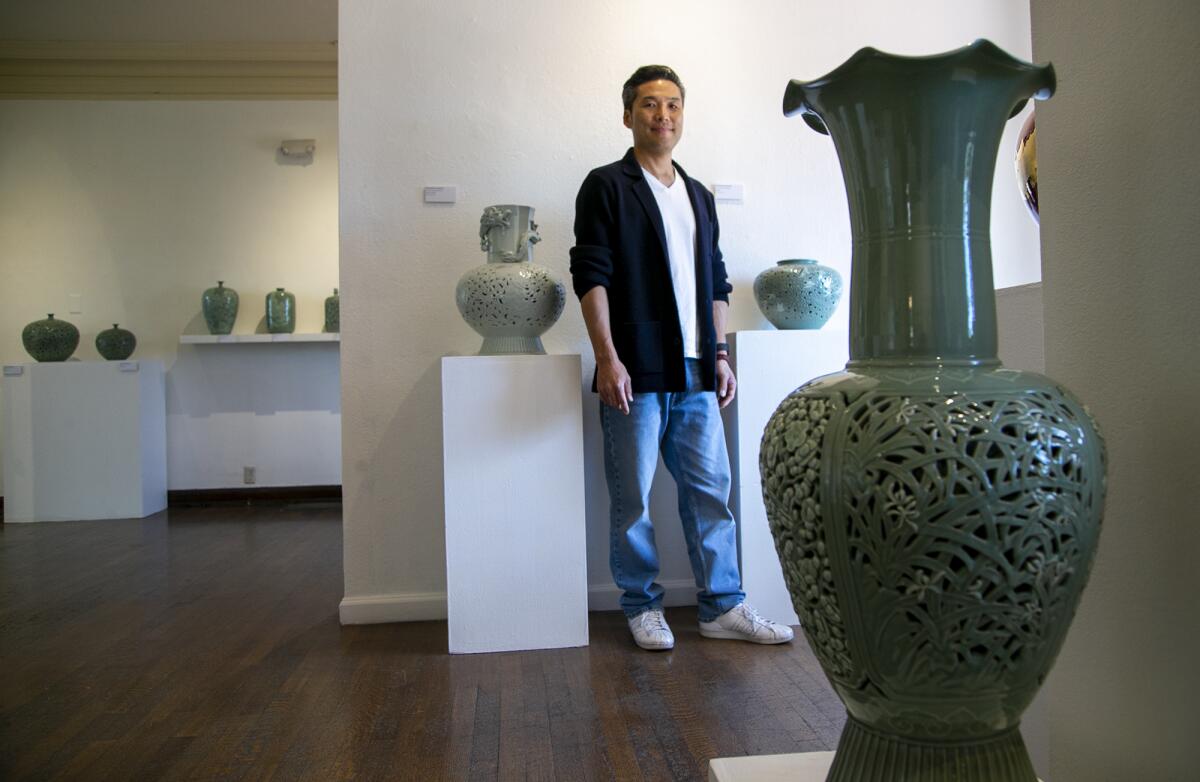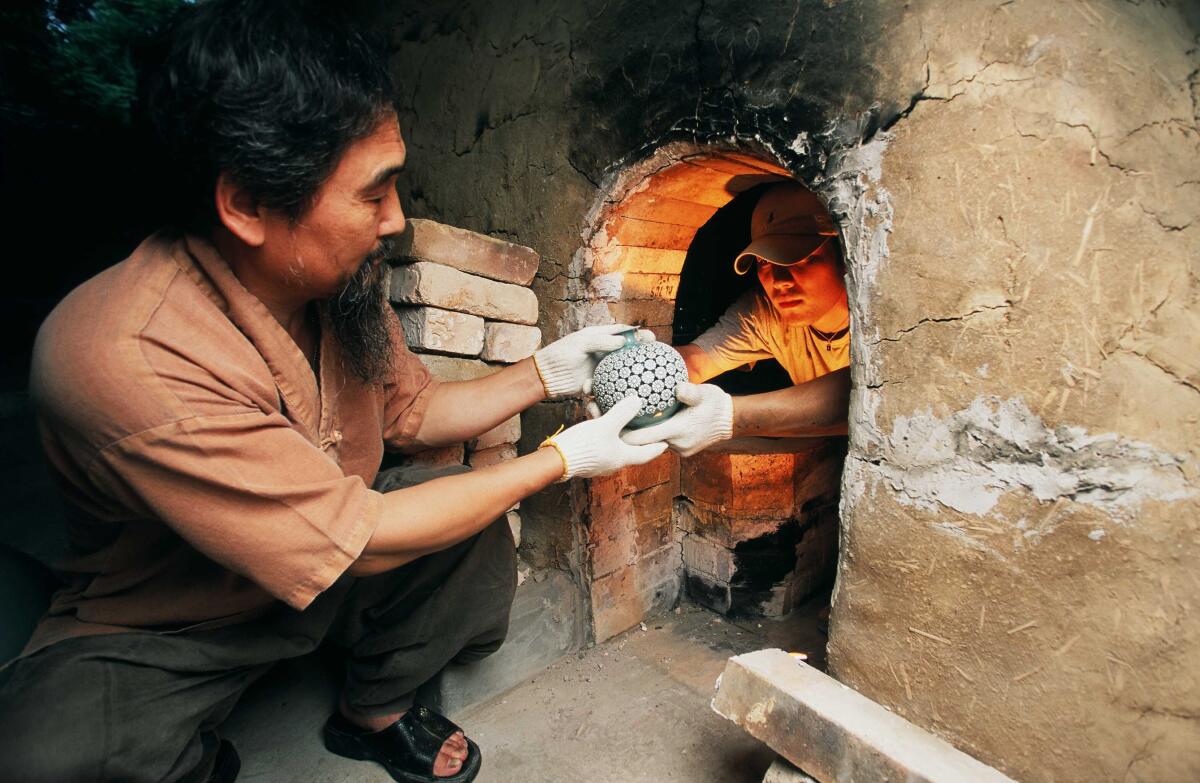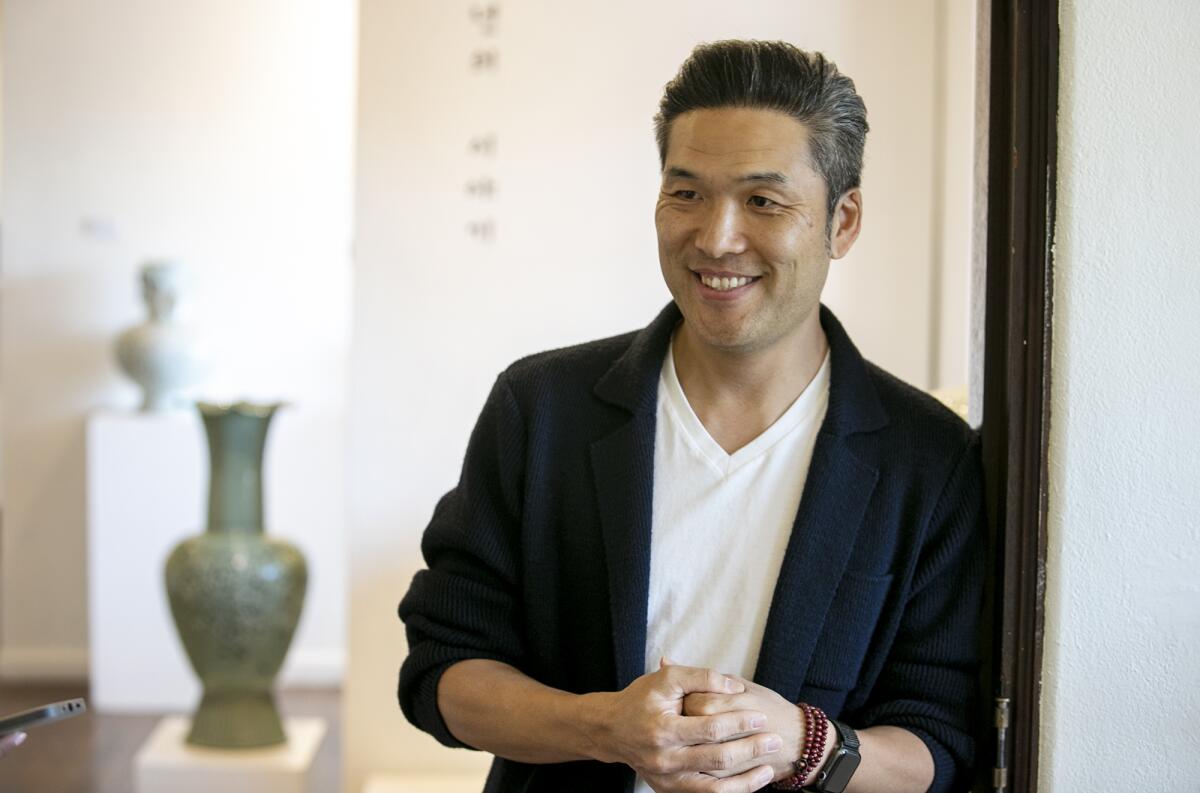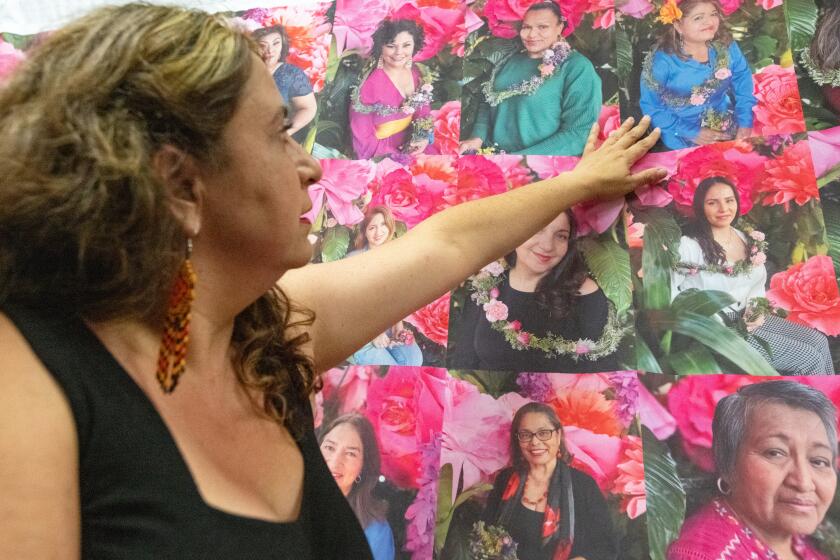‘Story of a Thousand Years’ makes it to Muckenthaler Cultural Center after 3 years

Dohun Kim has been waiting a long time to bring his work to Fullerton’s Muckenthaler Cultural Center.
“I was waiting for three years,” said Kim, “because of COVID.”
Kim is a patient man.
Kim, who holds a PhD in Ceramic Engineering and is a Korean ceramic master, practices the art of the tradition of Korean Goryeo celadon, a ceramic art form so meticulous, some vessels take years to create.
“That is the technique,” said Kim.
The Muckenthaler celebrates Asian Pacific American heritage month with an exhibit featuring the work of Kim and his father, Master Kim Se-Yong. “Story of a Thousand Years: Master of Goryeo Celadon” features the collaborative work of father and son.

Korean Goryeo Celadon, or Korean greenware as it is also known, was developed in the 10th and 11th centuries during the Goryeo period and carries a pale-green hue. The color comes from the iron content of the clay as well as iron oxide, manganese oxide and quartz in the glaze. A two-step firing process also contributes to the consistent color of celadon ceramics, a bisque firing to first harden the vessel and a second firing in low-oxygen to achieve the signature color and glossy finish.
“When you fire it by reduction firing, without air, the iron will change color from brown to blue,” said Kim. “It is a special and unique color.”
The result is a ceramic piece that looks like polished jade.
“You cannot capture the color of this Celadon in a photograph,” said Lisa M. Berman, chief curator at the Muckenthaler Cultural Center. “If you were to take a piece outside and look at it in different light, it just takes on a whole different meaning.”
Kim has studied the technique under the direction of his father, whose works are in the collections of the Dalai Lama and the late Queen Elizabeth II. At age 77, Kim Se-Yong is still working and traveled to the Muckenthaler for the show’s opening in April.

“This is all about legacy,” Berman said. “Master Kim Se-Yong, he is considered a living treasure … It was an honor to have him and his family here.”
Upon entering the exhibit, viewers are met with the tallest celadon vase ever made. Standing at almost 42 inches, the piece took nearly a decade to create, Kim said.
“We took 10 years because we had five years of failure,” said Kim.
The large piece wasn’t easy to handle in the kiln, not to mention the shrinkage that would happen once it was fired, with its size making it susceptible to cracking and collapsing.
“Then we found some techniques with firing and changing the composition of the clay,” said Kim.
Traditional Goryeo artists also combined distinct techniques like intricate inlaid ornamentation, and Kim and his father are no different. Designs are inlaid into the clay before firing, with different types of clay used to create different colors.

“The white you see is white clay, the black is black clay. It is not a pigment,” Kim said, motioning to a depiction of white birds with black feet on a vessel.
Double open work is another special technique incorporated into the Goryeo celadon ceramics Kim and his father create.
“There are two layers inside,” said Kim, “and we cut out the outside.”
The form inside remains whole, allowing the vessels to keep their function, while the outer layer is cut out to form a design that is as detailed and beautiful as a lace overlay on a wedding dress.
The designs showing bamboo, maple trees and acorns are pulled directly from Kim’s culture.
“All the designs are taken from Asian paintings and literature,” said Kim.
The plants and animals depicted also hold special symbolism.
“All trees, flowers and animals have special meanings,” said Kim. “The meaning of the chrysanthemum is joy, the dragon is a guardian.”

Berman said the exhibit only scratches the surface of Goryeo celadon ceramics and encourages art lovers to visit the Muckenthaler on May 13, when Kim will give a free lecture on celadon ceramics techniques at 12 p.m. in the gallery. She also hopes people will take the time to visit the exhibit that patiently waited out the pandemic to come to the Muckenthaler, before it heads to a museum at Harvard at the end of May.
“You have to experience these pieces in person,” said Berman.
“Story of a Thousand Years: Master of Goryeo Celadon” is open at the Muckenthaler Cultural Center until May 26.
All the latest on Orange County from Orange County.
Get our free TimesOC newsletter.
You may occasionally receive promotional content from the Daily Pilot.




